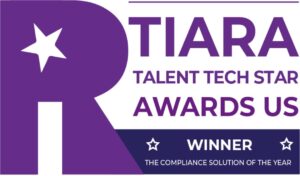Unfortunately, workplace harassment is fairly prevalent throughout many organizations across the U.S. In 2020 alone, the U.S. Equal Employment Opportunity Commission investigated over 67,000 charges of workplace discrimination and harassment. Most complaints are related to retaliation, closely followed by disability, race, sex, and age.
While you can’t control how your employees act in the workplace, you can put protections in place for workers who experience unwanted harassment or conduct by others.
Types of Workplace Harassment
Multiple types of harassment can occur in the workplace. A few of the most common include sexual, verbal, physical, psychological, and discriminatory.
Sexual Harassment
There are various types of sexual harassment, ranging from unwanted comments and touching to outright rape. Verbal sexual comments make employees uncomfortable, and they may feel unsafe reporting the incident, especially if the person commenting is in a leadership role.
Unfortunately, sexual harassment usually doesn’t stop, especially if it goes unreported. If the person conducting the harassment knows the victim is scared, they may escalate their actions.
Verbal Harassment
Verbal harassment consists of unwanted gossip, put-downs, and demeaning comments. Unfortunately, it’s incredibly hard to win a case of verbal harassment since snide comments aren’t illegal unless made against someone in a protected class with regard to their protected class. Courts will look at the claim as a personality conflict, and usually, there are no consequences to the harasser.
Verbal harassment can create a very hostile working environment and cause extreme stress and anxiety for the victim.
Physical Harassment
Physical harassment is relatively rare but does occur. It’s more likely to happen to people in minority classes, like LGBTQIA. Sometimes, cases of verbal harassment will escalate to physical issues if the victim tries to fight back or the aggressor intensifies their actions. Physical harassment can include assault, property damage, or threats.
Psychological Harassment
People who experience psychological harassment are often at the receiving end of a bullying campaign. Psychological harassment can take an extreme toll on the victim’s well-being, impacting their work and mental health. Psychological harassment can include isolating a worker or refusing to acknowledge their contributions. It can also include assaults on the individual’s character, such as spreading lies about the worker.
Discriminatory Harassment
Discriminatory harassment occurs when the victim is a member of a protected class. Protected classes exist for people of a minority race or gender or with certain disabilities. Age, religion, and sexual orientation are protected classes, too. Certain states extend their definition of a protected class beyond that of federal law. If the harassment occurs against someone in a protected class, it’s usually illegal, and the victim can pursue a lawsuit.
Strategies for Protecting Employees from Harassment
There are a few ways you can minimize workplace harassment.
Encourage a Positive Working Environment
Leaders must take care to model an open culture that is accepting of everyone. If there are employees in protected classes within their departments, they must actively involve them in group conversations and department projects. They should ensure their team members feel heard and supported.
If a manager witnesses another employee harassing their colleague, they must nip it in the bud. If the manager doesn’t take the appropriate action, the harasser will likely decide there aren’t any consequences and escalate their activities against the victim. A manager not taking action to a witnessed event could also create liability to the business.
Examine the Working Environment for Risks
Management should continuously review the working environment for potential risks that could lead to workplace harassment. For instance, departments dominated by men could result in female or transgender employees feeling uncomfortable or becoming victims of harassment.
It’s best to ensure a mixture of protected classes within each department. Implementing a diversity hiring program can help you change the landscape of your departments and reduce potential harassment complaints.
Conduct Employee Wellness Surveys
Organizations can monitor their employee’s feelings about the workplace through anonymous surveys. They should include inquiries in their surveys that question whether employees experience any harassment or other actions that make them feel uncomfortable.
While not every employee will feel comfortable responding to the inquiries, it will allow them to provide anonymous feedback. Surveys can be an excellent way to survey the workplace climate.
Maintain a Company-wide Anti-Harassment Policy
Your human resources department should have a comprehensive anti-harassment policy that covers all five types of workplace harassment and provides employees a means to make a complaint. Employees should understand the consequences of harassing another worker and how it will impact their job.
There should be no tolerance for workplace harassment, and people who engage in it should be disciplined appropriately.
Offer Regular Harassment Training to Employees
Most companies provide yearly training on harassment for both employees and managers. New employees usually undergo training during their first few days at the workplace.
While training isn’t usually enough to stop people from engaging in workplace harassment, it does demonstrate that the company takes harassment seriously. It also helps employees and managers understand how to respond if they witness harassment in the workplace.
Consequences of Harassment on the Employer and Employees
Harassment can have severe repercussions in the workplace, especially if no one takes action to stop it. Victims will experience increased anxiety, stress, and mental health concerns. Certain types of harassment can physically and mentally harm the victim.
Ongoing harassment can create a hostile work environment where victims and witnesses to the harassment feel very uncomfortable. Eventually, people will leave for other opportunities, which affects the company’s productivity and overall business operations.
Not taking action on workplace harassment can also have legal repercussions on the business. Employees growing fed up with the ongoing harassment may file a lawsuit or leave negative reviews about the company on public forums like Glassdoor. Poor reviews can dissuade potential applicants from pursuing employment with the company.
Nip Workplace Harassment in the Bud
Senior leadership should take every action to protect their workers from harassment in the workplace and make sure they model positive behavior among their teams. If employees complain of harassment, managers notify the HR team so they should investigate the complaint quickly and sincerely. With the proper protections in place, you’ll reduce the potential for harassment, improve the workplace environment, and reduce risk and liability to your business.
The VirgilHR platform provides HR teams with the resources they need to stay compliant with HR laws and the tools to help establish an inclusive work culture. Contact us today to learn more and schedule a demo.






